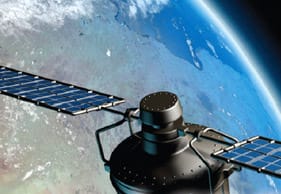These days many of us use GPS navigation units in our cars, and many runners and walkers wear GPS wrist units that tell them the distance they’ve run and their average pace. Now most of us only know the bare basics of the technology and history of GPS, so Modern Athlete did a bit of research.
The Global Positioning System (GPS) is a satellite-based navigation system launched in 1978 by the United States Department of Defence. It was originally intended for military use only, such as pinpointing targets for missile strikes or search and rescue locations for downed pilots, but in the 1980s the US government opened the system to civilian use.
Today GPS is widely used to aid ground, sea and aerial navigation, for map-making, land surveying, scientific use, tracking and surveillance, and outdoor sports and hobbies. However, us Modern Athletes are most interested in two specific uses: keeping track of our distance, speed and route when we run or walk, and finding the start venue of our next race!
HOW IT WORKS
GPS is made up of a network of 32 satellites in six orbital planes around the Earth. They make two complete orbits of the Earth each day, at an altitude of approximately 20 200km and a speed of roughly 12 250km/h. Their orbits are arranged so that at least six satellites are always within line of sight from any point on Earth’s surface, with up to ten being visible at ‘peak’ times.
The satellites transmit radio signals that a GPS receiver – the unit in a car or a runner’s wrist unit – uses to calculate the user’s exact location. Basically, the GPS receiver compares the time a signal was transmitted to the time it was received – the difference tells the GPS receiver how far away the satellite is. A GPS receiver must lock on to the signal of at least three satellites to calculate a 2D position (latitude and longitude) and track the user’s movement. With four or more satellites in view, the receiver can determine the user’s 3D position (latitude, longitude and altitude). Once the user’s position has been
determined, the GPS unit can start calculating distance from starting point, speed, pace, direction and more.
GPS works in any weather conditions, anywhere in the world, 24 hours a day. The signals pass through clouds, glass and plastic, but will not go through most solid objects. Buildings, mountains or sometimes even dense foliage can therefore block or slow down signal reception, and GPS units usually don’t work indoors, underwater or underground. That said, modern receivers are accurate to within a few metres thanks to their multi-channel technology that allows them to maintain strong locks on numerous satellites at the same time.
ON THE RUN
Using a GPS unit provides an integrated training and monitoring system that allows you to track your distance and pace, and thus get the most out of your training as well as aid your racing. Some of the basic benefits for runners and walkers include:
- Accurate distance: Many runners follow training programmes ahead of a goal race, but are never sure of the exact distance they’ve run – unless they run the same measured route day after day, which can become boring and un-stimulating. A GPS unit allows you to keep track of your run and make sure you do the right distance for your training programme.
- Average pace: Some training programmes call for an average pace to be run, either to maximise the effect of your programme, or to get you race-ready by practising the pace you will be running on race day. Also, setting your GPS unit to display average pace is an invaluable aid when going for a specific time in a race or time trial, as you don’t have to do mental calculations at each kay marker, just stick to your target pace, and you get onto your target pace right from the start of the run – particularly useful if you’re a pacesetter!
Some advanced units even tell you your altitude and let you view your route afterwards on Google Earth, or through downloadable maps and altitude profi les on your PC – and if you get lost during your run, they will help you find your way home again!
GPS VERSUS THE REST
Athletes often ask how GPS compares to other devices that measure pace or distance.
- A pedometer uses a spring-loaded weight inside a small device worn on your belt to detect the shaking motion of your body as you take a step. They’re inexpensive but less accurate than other types of devices. Their features tend to be very basic.
- Foot pod systems use an accelerometer inside a pod that’s attached to your shoe to detect and
measure the motion of your foot. They work quite well once calibrated to your stride, but tend to
lack more sophisticated features available with GPS. Where they do stand out above GPS units,
however, is for people who run in areas where the sky is completely blocked by heavy tree cover or tall buildings.
- GPS units use triangulated signals from satellites to monitor your position and calculate pace and
distance. Modern units are highly accurate – if you run where the unit can receive strong signals from the orbiting satellites.


